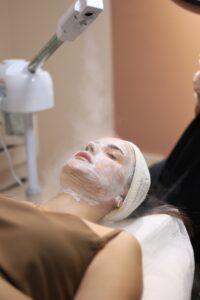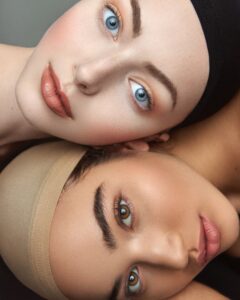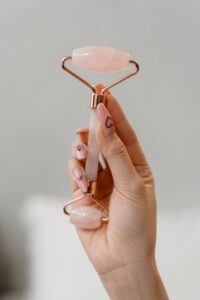Ingredients to Avoid and Why

In recent years, there has been a significant shift towards clean beauty, with more and more consumers seeking out natural and non-toxic skincare and makeup products. This shift is driven by concerns about the potentially harmful chemicals that are often found in beauty products and their potential effects on our health and the environment. In this blog post, we’ll take a closer look at some of the ingredients commonly found in beauty products that you might want to avoid, and why.
Parabens
Parabens are synthetic preservatives that are commonly used in cosmetics and personal care products to prevent the growth of bacteria and fungi. However, some studies have suggested that parabens may be endocrine disruptors, which means that they may interfere with the body’s hormone system. Specifically, parabens have been found to mimic estrogen, which can lead to an increased risk of breast cancer and other reproductive issues. While the evidence is not conclusive, many consumers choose to avoid parabens as a precautionary measure.
Phthalates
Phthalates are a group of chemicals that are often used in fragrances, plastics, and other consumer products. In cosmetics, phthalates are used to improve the texture and consistency of products. However, like parabens, phthalates are also believed to be endocrine disruptors and may be linked to reproductive issues, including reduced fertility and birth defects. In addition, some studies have suggested that phthalates may also be linked to certain types of cancer. For these reasons, many consumers choose to avoid phthalates in their beauty products.

Sulfates
Sulfates are a type of surfactant that are commonly used in shampoos, body washes, and other cleansing products to create a lather and remove dirt and oil from the skin and hair. However, sulfates can be harsh and drying, particularly for those with sensitive skin. In addition, some studies have suggested that sulfates may also be linked to skin irritation, environmental pollution, and even organ toxicity. While sulfates are generally considered safe in small doses, many consumers choose to avoid them altogether.
Formaldehyde
Formaldehyde is a colorless gas that is commonly used as a preservative in cosmetics and personal care products. However, formaldehyde is a known carcinogen, which means that it has the potential to cause cancer. In addition, formaldehyde can also cause skin irritation, respiratory issues, and other health problems. For these reasons, many consumers choose to avoid formaldehyde and formaldehyde-releasing preservatives in their beauty products.
Mineral oil
Mineral oil is a byproduct of petroleum that is commonly used in cosmetics and skincare products as a moisturizer. However, mineral oil is also a known comedogenic, which means that it can clog pores and lead to breakouts. In addition, mineral oil is not a sustainable or eco-friendly ingredient, as it is derived from non-renewable resources. For these reasons, many consumers choose to avoid mineral oil in their beauty products and opt for natural alternatives like plant oils and butters.
Fragrance
Fragrance is a term that can refer to any number of synthetic or natural ingredients used to give a product a specific scent. However, many of the chemicals used in fragrances can be irritants or allergens, and some are also potential endocrine disruptors. In addition, companies are not required to disclose the specific ingredients used in their fragrances, which can make it difficult for consumers to know exactly what they are putting on their skin. For these reasons, many consumers choose to avoid products with added fragrance or opt for products with natural, plant-based scents.

In conclusion, clean beauty is all about being mindful of the ingredients we put on our skin and the potential effects they may have on our health and the environment. While the beauty industry has come a long way in terms of developing safer and more natural products, there are still many ingredients that are cause for concern. By being aware of these ingredients and choosing products that are free from them, we can take steps towards protecting our health and the planet.
Of course, it can be overwhelming to try and decipher ingredient lists and determine which products are truly “clean”. A good rule of thumb is to look for products that are certified by third-party organizations like the Environmental Working Group (EWG), which evaluates the safety of ingredients and products. Additionally, familiarizing yourself with the names and potential effects of common toxic ingredients can help you make informed choices when shopping for beauty products.
Ultimately, clean beauty is not just a passing trend – it’s a movement towards safer, healthier, and more sustainable beauty products. By educating ourselves and supporting brands that prioritize transparency and non-toxic ingredients, we can all play a role in making the beauty industry a safer and more responsible one.

